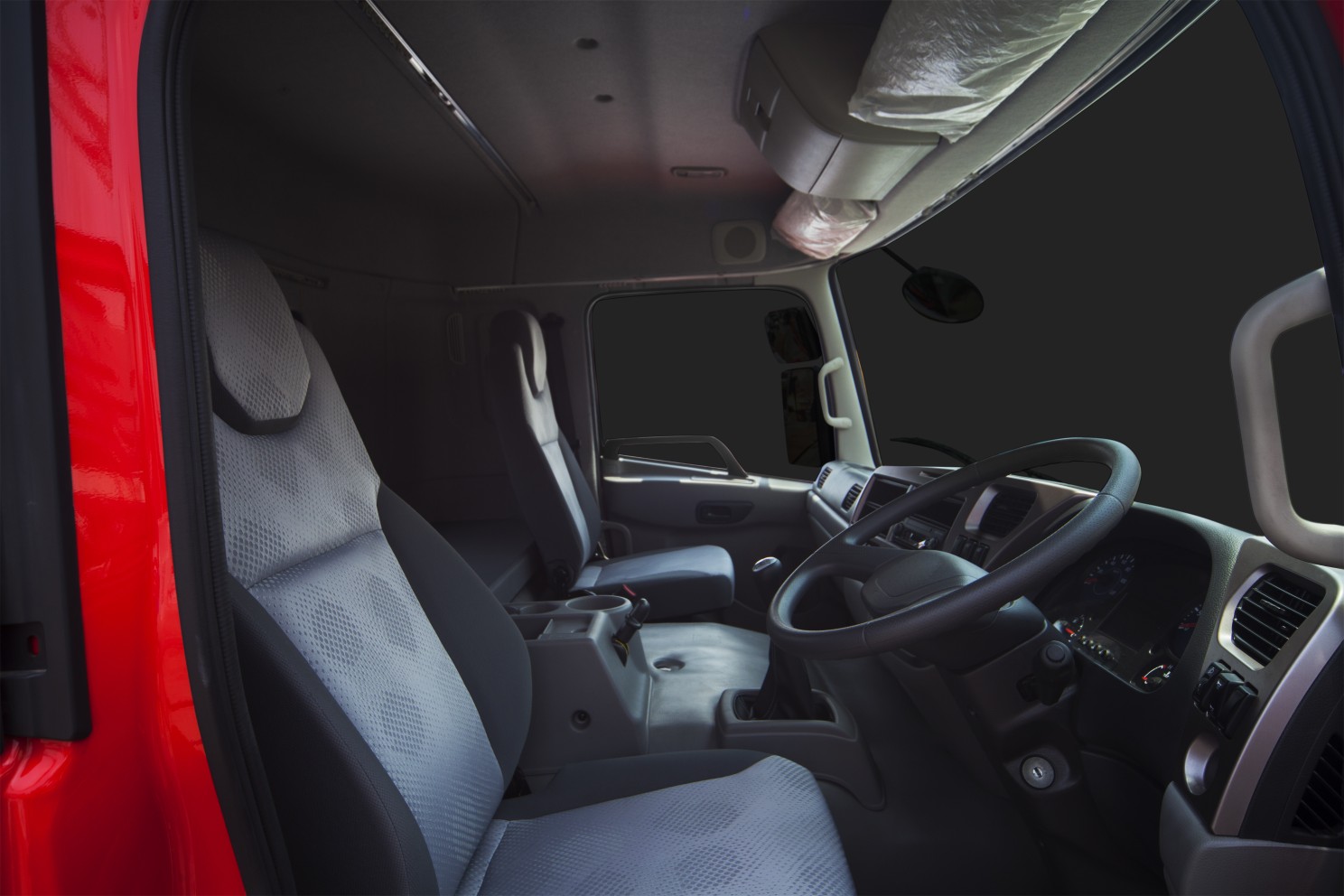
Susie Jones
Cinco dicas para fazer da cabina do seu camião uma casa
Criado: 22/08/2024
•
Atualizado: 22/08/2024
Como camionista, passa longas horas na estrada, o que muitas vezes pode ser cansativo e monótono, por isso, naturalmente, gostaria que o seu ambiente, a área onde está estacionado durante mais tempo, se sentisse como uma segunda casa. Por conseguinte, muitos condutores tendem a personalizar e decorar as suas cabinas, mas quais são as melhores formas de fazer com que a configuração da sua cabina-cama pareça uma casa longe de casa? Compilámos cinco dicas de topo para o ajudar no seu percurso.
Decoração
Uma das melhores maneiras de personalizar o seu táxi é acrescentar decorações que o façam lembrar de casa. As decorações também lhe permitem acrescentar estilo e cor.
Roupa de cama e almofadas - Dê um toque pessoal à sua roupa de cama e almofadas, escolhendo algumas que tenham uma cor ou um padrão de que goste. Isto pode tornar a sua cabina um pouco mais acolhedora e menos estagnada.
Capas para assentos - As capas para assentos estão frequentemente disponíveis em diferentes cores, padrões e materiais que darão alguma vida à sua cabina. Não só tornarão a cabina mais convidativa, como também protegerão o interior do desgaste, da sujidade e dos derrames. A Amazon tende a ter uma grande seleção de cores disponíveis.
Tapetes, cortinas e persianas - Escolher alguns tapetes e cortinas pode transformar o interior da sua cabina. As cortinas não só acrescentam um valor esteticamente agradável, como também o ajudam a dormir bem à noite.
Fotografias, posters e obras de arte - Estes objectos não ocupam muito espaço na sua cabina e podem fazer com que esta se sinta imediatamente em casa. Utilize ganchos de comando para uma instalação sem danos.
Entretenimento: No final do dia de condução, relaxe como se estivesse em casa, vendo televisão, um DVD ou transmitindo algo no seu computador portátil. Necessitará de WiFi antes de fazer streaming. Consulte a nossa [página de mapas] (https://snapacc.com/map/) para saber quais as paragens que oferecem este serviço.
Em alternativa, crie um hotspot para smartphone que utilize os dados do seu telemóvel para o streaming. Os livros e as revistas são outra excelente forma de o manter entretido após um longo dia de condução. Por vezes, uma simples videochamada para amigos ou familiares pode relaxá-lo e fazê-lo sentir-se em casa.

Conforto
Passa muito tempo na cabina, pelo que é importante não comprometer o seu conforto. Por que não investir no seguinte:
Capa de colchão - Ter uma boa noite de sono é crucial para a sua segurança e a segurança dos outros. Investir num bom protetor de colchão garante-lhe um espaço confortável para dormir.
Banco do condutor ergonómico - A maior parte do seu tempo será passada no banco do condutor, pelo que é importante garantir que este seja o mais confortável e apoiado possível. Invista num banco de condutor ergonómico ou numa almofada que apoie as suas costas durante essas longas horas.
Almofadas e cobertores extra - Como já foi referido, comprar roupa de cama e almofadas numa cor ou num padrão de que goste pode fazer com que a sua cabina se sinta mais em casa. Considere a possibilidade de comprar almofadas e cobertores extra para dar um toque ainda mais pessoal à cabina e um máximo de conforto.
Área da cozinha/equipamentos
Adicionar um mini-frigorífico ou um micro-ondas à sua cabina pode permitir-lhe preparar comida como faria em casa, para não ter de depender de paragens de camiões e de comer fora. Sugerimos que pense nos artigos de que necessitará nesta área, por exemplo, se gosta de beber café, tente adquirir uma pequena máquina de café. Utilizar a sua área de cozinha e os seus electrodomésticos não só o impedirá de gastar uma fortuna a comer fora, como também afectará a sua saúde geral para melhor.
Manter as coisas limpas e arrumadas
Viver num espaço pequeno pode tornar-se bastante confuso muito rapidamente. Investir tempo e esforço para ter uma rotina de limpeza regular pode fazer maravilhas pela sua saúde mental e permitir-lhe trabalhar de forma mais eficiente e eficaz. Assegurar que tem áreas dedicadas para os seus objectos ajudará neste aspeto e ProDrivers tem algumas dicas excelentes para manter tudo organizado.
Como é que os condutores de camiões lidam com o tédio?
O tédio não só tem impacto na satisfação profissional, como também pode afetar a segurança no trabalho. Há muitas formas de os condutores de camiões se manterem entretidos enquanto estão na estrada.
Música e podcasts: A música é uma óptima forma de manter os condutores entretidos durante as longas viagens. A criação de uma lista de reprodução de canções favoritas para ouvir pode reduzir instantaneamente o tédio. Os podcasts são uma óptima forma de mudar as coisas, muitos deles podem oferecer conselhos, ajudar a aprender uma nova competência ou simplesmente entreter.
Esticar as pernas: Parar e sair do táxi para esticar as pernas pode banir instantaneamente o tédio. As paragens regulares também podem aumentar a sua energia.
Onde é que os camionistas dormem?
Desde 1 de novembro, os condutores de veículos pesados no Reino Unido que fazem pausas semanais regulares nas cabinas têm agora de as fazer em áreas de repouso adequadas. Devido ao facto de existirem poucas, alguns condutores têm descansado em parques de estacionamento que, muitas vezes, não são seguros. Por conseguinte, é essencial encontrar um local seguro e tranquilo para estacionar para uma boa noite de sono ou de descanso. Utilizando a nossa aplicação intruck ou indo à nossa [página de mapas] (https://snapacc.com/map/), pode encontrar um parque de camiões perto de si e ver quais as instalações oferecidas.
Como é que os condutores de camiões lidam com a solidão?
Embora existam muitas vantagens em ser um camionista, uma das desvantagens da indústria pode ser a solidão. Esta pode ser um problema para muitos condutores que se sentem isolados devido à natureza do seu trabalho. Fazer planos para se manter em contacto com amigos e familiares pode dar aos condutores um impulso quando estão na estrada. Os fóruns de camionagem, os grupos do Facebook e as salas de conversação são óptimos se quiser fazer parte da comunidade de camionagem. [All Trucking] (https://www.alltrucking.com/faq/how-beat-being-lonely-truck-driver-road) tem algumas dicas fantásticas para o ajudar a combater a solidão enquanto camionista na estrada.
Fazer com que a sua cabina de camião se sinta em casa requer um pouco de esforço e criatividade, mas os benefícios de o fazer tornarão as suas longas viagens muito mais fáceis. É importante lembrar que pequenos toques podem fazer uma grande diferença no seu espaço de vida e a utilização das dicas acima permitir-lhe-á torná-lo confortável e acolhedor. Como é que faz com que o seu táxi se sinta como uma casa longe de casa?



